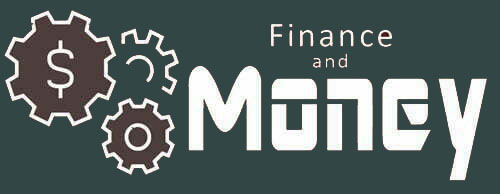The Hidden Financial Web
While the American public knows fentanyl pours across the border, fewer people realize how deeply the money that fuels the trade penetrates the U.S. financial system. Recent investigations by the Treasury Department’s Financial Crimes Enforcement Network (FinCEN) reveal that Chinese money laundering networks have pushed more than $312 billion through U.S. banks in just the past five years. These underground financial syndicates operate as the unseen engine behind cartels, scammers, and even foreign regimes evading sanctions.
What the Networks Are Doing
Chinese money laundering groups have become the preferred financial service providers for Mexico’s Sinaloa cartel, Jalisco New Generation cartel, and other global criminal organizations. They don’t just launder drug profits. They also move money tied to human trafficking, healthcare fraud, elder abuse, and real estate schemes. FinCEN’s report found that suspicious property transactions alone added up to nearly $54 billion.
At the heart of these operations is a shadow banking system sometimes called fei qian, or “flying money,” which functions outside official channels and thrives on trust-based exchanges. Brokers on one side of the globe accept local currency and arrange for equivalent amounts to be paid out elsewhere, without any visible wire transfer or paper trail.
The Mechanics of Laundering
The system works because of a unique alliance of needs. Mexican cartels have mountains of U.S. cash but can’t easily move it through Mexico’s banks due to strict limits on dollar deposits. Meanwhile, Chinese citizens are restricted by Beijing’s currency controls and seek ways to buy U.S. dollars for overseas investment or migration.
Here’s how the deal comes together:
- Cartels hand over drug dollars to Chinese networks in the United States.
- Those networks sell the dollars to Chinese citizens who want to bypass restrictions.
- Settlement happens quietly through trade-based laundering, luxury goods purchases, cryptocurrency, or real estate deals.
To avoid detection, launderers use tactics like “mirror transactions,” where cartel dollars are exchanged for pesos abroad in nearly real-time, or by structuring deposits into small amounts to avoid bank reporting rules. Some networks also recruit Chinese students in the U.S. as money mules, asking them to open bank accounts and disguise illicit transfers as “tuition” or “living expenses.”
The Scale of the Problem
The numbers are staggering. Between 2020 and 2024, U.S. financial institutions processed an average of $62 billion per year tied to Chinese laundering networks. Banks handled $246 billion of the flows, money service businesses took on $42 billion, and securities firms processed another $23 billion.
Major banks have already been caught. TD Bank agreed to pay more than $3 billion in fines after prosecutors discovered it had been used to launder $470 million for Chinese networks operating out of New York and New Jersey. Past cases show the problem is not new—Wachovia, HSBC, Danske Bank, and others have faced similar scandals.
Despite this, critics note that policymakers continue to spotlight cryptocurrency as a primary laundering tool, even though illicit crypto activity in the past five years was less than $200 billion worldwide—tiny compared to the trillions moved through traditional banks.
Laws Broken and Risks Created
These operations violate U.S. anti-money-laundering regulations under the Bank Secrecy Act, which requires financial institutions to report suspicious activity. By structuring deposits, forging identities, or disguising transactions, networks actively evade reporting laws.
More than a financial crime, authorities say these networks pose a national security threat. They enable the flood of fentanyl into American communities, fund adversarial regimes like Iran and North Korea, and undermine the integrity of U.S. housing markets by converting dirty money into real estate.
FinCEN, the Justice Department, and Homeland Security Investigations are leading efforts to uncover and dismantle these shadow systems. Operations like the 2024 “Golden Tiger” sting dismantled a $2.3 billion laundering network tied to both cartels and Chinese brokers, resulting in nearly 100 arrests across several countries.
Lawmakers on the House Select Committee on the Strategic Competition Between the United States and the Chinese Communist Party have also spotlighted the issue. Their 2024 report claimed that the Chinese Communist Party directly profits from fentanyl trafficking and shields the organized crime groups behind it. Experts like John Cassara, a former U.S. intelligence officer, have gone further, warning Congress that China is now “the largest money laundering actor in the world.”
Authorities recommend tougher oversight on small deposits, real-time AI monitoring for structured transactions, and better sharing of suspicious activity reports across borders. They also want mandatory disclosure of beneficial ownership in real estate and stricter penalties for banks that ignore internal red flags.
But experts warn the solution is not just more rules. It requires political will to confront China’s role and cooperation among international regulators to close the gaps these networks exploit.
The Silent Threat
As one senior Treasury official put it, “Fei qian is a black hole in the global economy. Money goes in, but it doesn’t come out in any traceable form.” Unless these networks are exposed and dismantled, billions more will continue to move invisibly through U.S. banks—fueling addiction, crime, and corruption worldwide.





